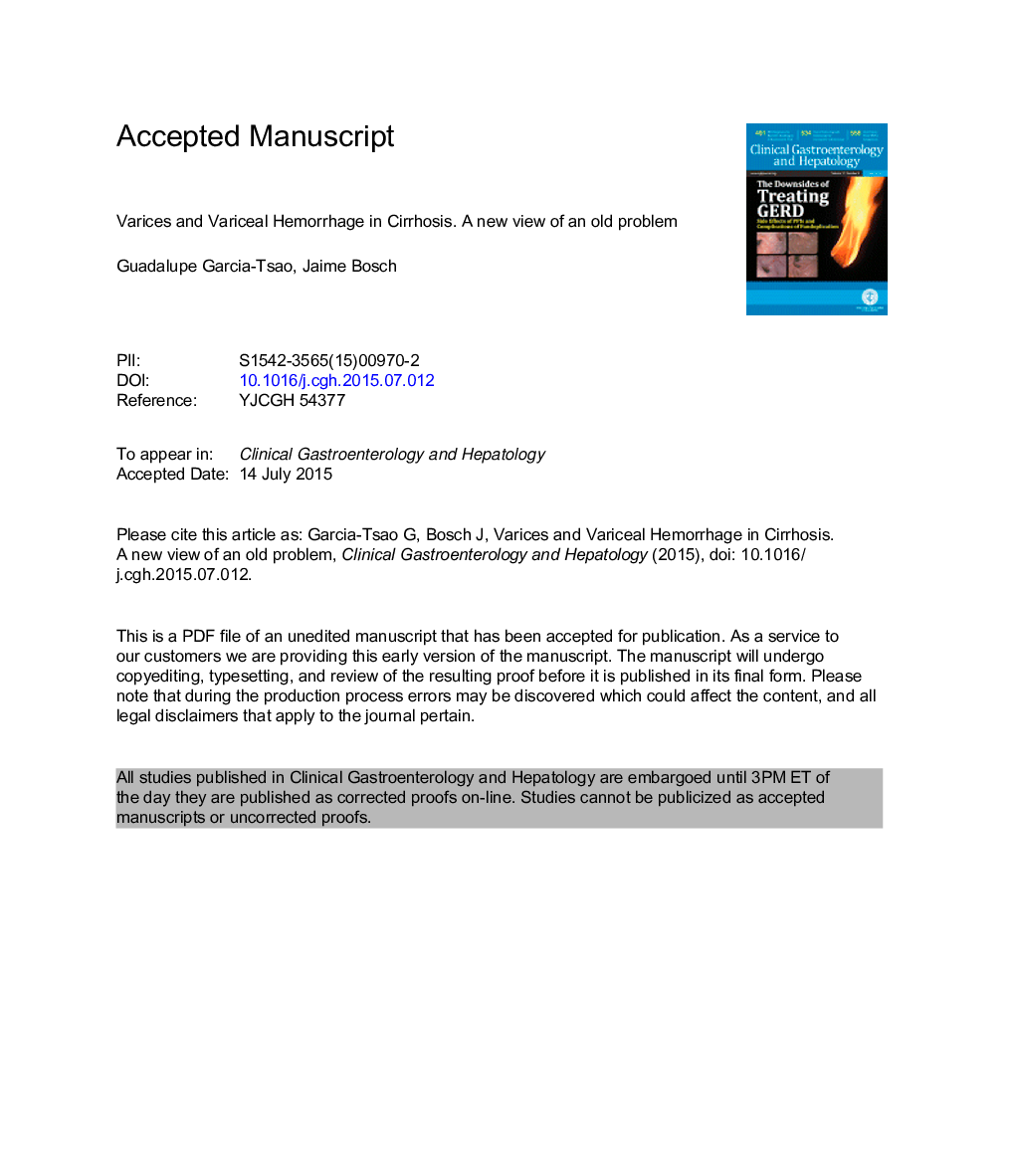| Article ID | Journal | Published Year | Pages | File Type |
|---|---|---|---|---|
| 3281611 | Clinical Gastroenterology and Hepatology | 2015 | 27 Pages |
Abstract
The management of portal hypertension in cirrhosis has evolved over time, leading to improvements in the care and survival of patients with varices and variceal hemorrhage, particularly in patients who achieve a significant reduction in portal pressure. In addition to better treatment strategies and improved therapeutic options, the issue of risk stratification has become essential to identify different patient subpopulations that require a different treatment. We now recognize that the management of varices and variceal hemorrhage must be taken in the context of other complications of cirrhosis (ascites, encephalopathy, jaundice) and that the goals of therapy should be based on the presence of such complications. Evolving knowledge of the predominant pathophysiological mechanisms at each of the stages of cirrhosis also has evolved and will continue to lead to improvements in therapy. This review focuses on the management of varices and variceal hemorrhage with respect to refinements in the risk stratification of patients with cirrhosis.
Keywords
EVLISMNNSBBNonselective β-BlockerCSPHAASLDHVPGEGDAmerican Association for the Study of Liver Diseasesendoscopic variceal ligationesophagogastroduodenoscopyisosorbide mononitrateclinically significant portal hypertensionVariceal hemorrhageCirrhosistransjugular intrahepatic portosystemic shuntHepatic venous pressure gradientTIPSVaricesPortal hypertension
Related Topics
Health Sciences
Medicine and Dentistry
Gastroenterology
Authors
Guadalupe Garcia-Tsao, Jaime Bosch,
